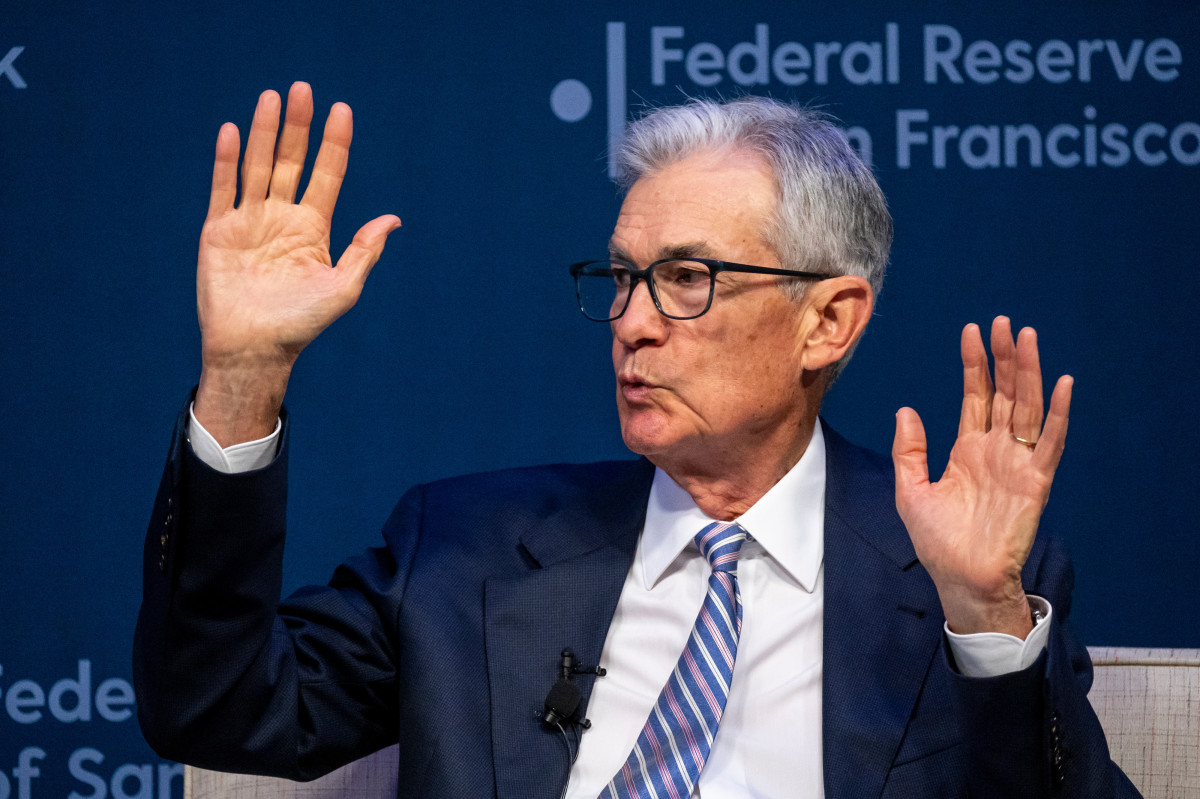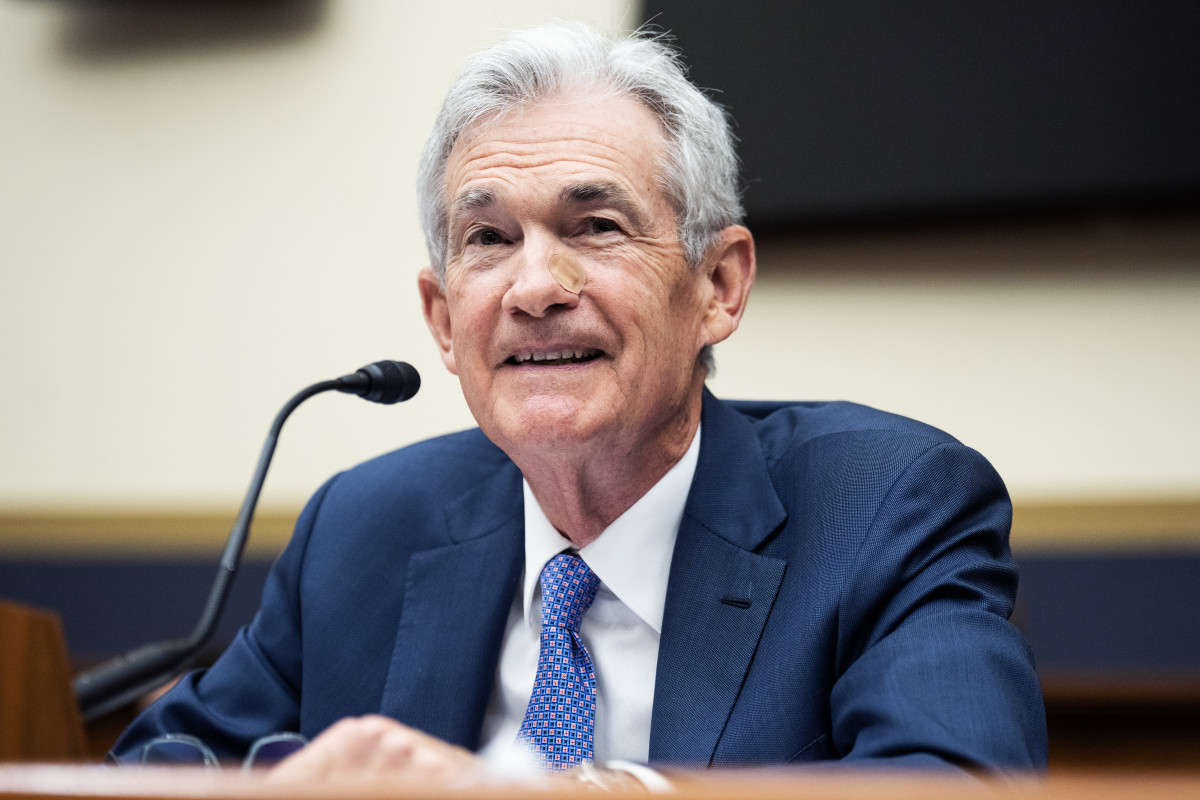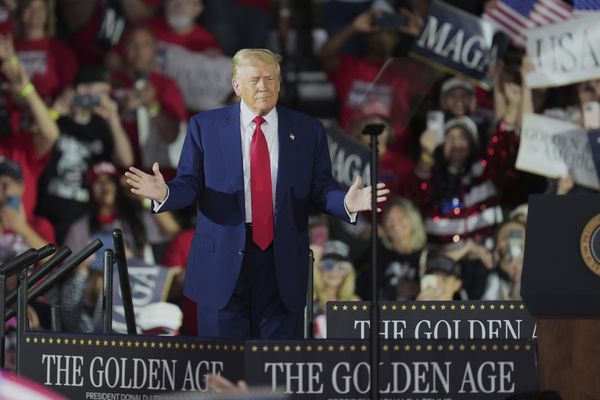
When it came to interest rates, Bill Gross kept it simple.
“It's sort of like a teeter-totter,” said the co-founder of Pacific Investment Management Co. “When interest rates go down, prices go up.”
💵💰Don't miss the move: Subscribe to TheStreet's free daily newsletter 💰💵
Interest rates influence borrowing costs and household and business spending decisions. Lower interest rates make borrowing money cheaper, encouraging spending and investment.
Last month, the Federal Open Market Committee said it would maintain the federal funds rate at its current range of 4.25% to 4.5%.
The decision comes after the central bank trimmed rates three times starting in September 2024, which has pushed down the federal funds rate — the rate banks charge each other for short-term loans — by one percentage point.
Federal Reserve Chair Jerome Powell told the Senate Banking Committee that with a strong job market and elevated inflation, he and his colleagues "do not need to be in a hurry" to cut interest rates.

Analyst expects Fed to wait and see on rates
Powell said the central bank had lowered its benchmark interest rate by a full percentage point last year. Further cuts will likely have to wait until inflation cools further or until there's a notable softening of the job market.
The Fed’s decision drew a swift rebuke from President Donald Trump, who blamed the central bank responsible for the inflation surge in 2022.
More 2025 stock market forecasts
- Veteran trader who correctly picked Palantir as top stock in ‘24 reveals best stock for ‘25
- 5 quantum computing stocks investors are targeting in 2025
- Goldman Sachs picks top sectors to own in 2025
- Every major Wall Street analyst's S&P 500 forecast for 2025
“If the Fed had spent less time on [diversity-equity-inclusion], gender ideology, ‘green’ energy, and fake climate change, Inflation would never have been a problem,” he said on his Truth Social Platform.
Trump said that interest rates should be lowered and that would go “hand in hand” with his upcoming tariffs. Most economists worry that tariffs will at least temporarily push up inflation.
Powell said Trump’s calls for lower interest rates will not cause the central bank to change its rate decisions.
“People can be confident that we’ll continue to keep our heads down, do our work, and make our decisions based on what’s happening in the economy,” Powell said, under questioning from members of the House Financial Services Committee, the Associated Press reported.
Meanwhile, the headline Consumer Price Index for January surged 0.5% month over month in January, more than the expected 0.3% gain, with energy prices up 1.1% and food prices 0.4%.
Core CPI also posted a disappointingly hot 0.4% gain — after a modest 0.2% advance in December.
The CPI is a widely used inflation benchmark, gauging the level of price pressures in the world's biggest economy and the way they influence consumer and investor behavior.
"While CPI inflation has made steady progress toward 2%, it has remained stuck around 3% for a few months," said Gregory Daco, chief economist at EY-Parthenon, Ernst & Young LLP. "With inflation higher than desired, policymakers will continue to see solid labor market conditions as a reason to proceed carefully with policy recalibration."
Daco said the firm believes the Fed will maintain a wait-and-see approach over the coming months and expect only two Fed rate cuts in 2025, in June and December.
"The risk is tilted toward less easing if the administration’s policy mix fuels inflation and inflation expectations," he said.
BofA says bottom line is clear
Bank of America Securities analysts said the CPI numbers increased the firm's conviction that the Fed cutting cycle is over.
Markets are now pricing only about 25bp of cuts this year, BofA said, and while hikes remain unlikely, they seem less inconceivable now.
Related: CPI inflation shock hammers Fed rate cut bets for 2025
"In our view, the bottom line is clear: the Fed has no reason to cut further," the firm said in a Feb 12 research note. "Inflation seems to be stuck above target and the u-rate nearly had a 3-handle in Jan. In our view, the bar for hikes is still high, but they should be part of the conversation after today's data.
The report showed strength across the board, BofA said. Core goods inflation accelerated to 0.28%, with large increases in used car and medical care commodity prices.
"Apparel surprised to the downside," the firm said. "The pickup in core goods inflation wasn't a big surprise to us, as we had found evidence of residual seasonality in Jan in core goods."
To the extent that residual seasonality is boosting January inflation every year, BofA said, it would be suppressing inflation in other months.
"So, we think it makes sense to stay focused on year-over year inflation rates, instead of seeking comfort in three- or six-month rates late in the year, as the Fed has done for the past two years," the firm said,
The Fed prefers Personal Consumption Expenditures price index, which adjusts for changes in consumer spending patterns, to help formulate monetary policy.
The PCE rose 2.6% in December from the year before, climbing from November’s 2.4% increase.
"We still think the threshold for hikes is 3% core PCE inflation and unanchored long-term inflation expectations," BofA said. "We appreciate that the political challenges to raising rates could be substantial. But if the Fed doesn't want to hike, that is yet another reason to not cut any further."
The Fed is scheduled to meet again on March 18-19.
Related: Veteran fund manager issues dire S&P 500 warning for 2025







